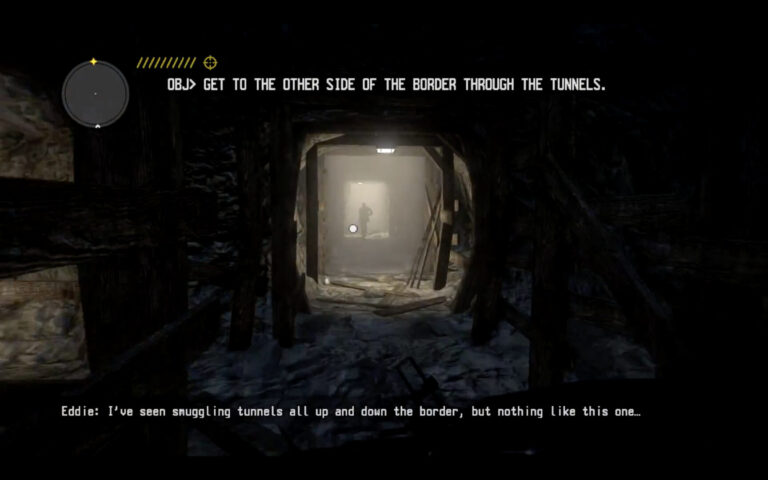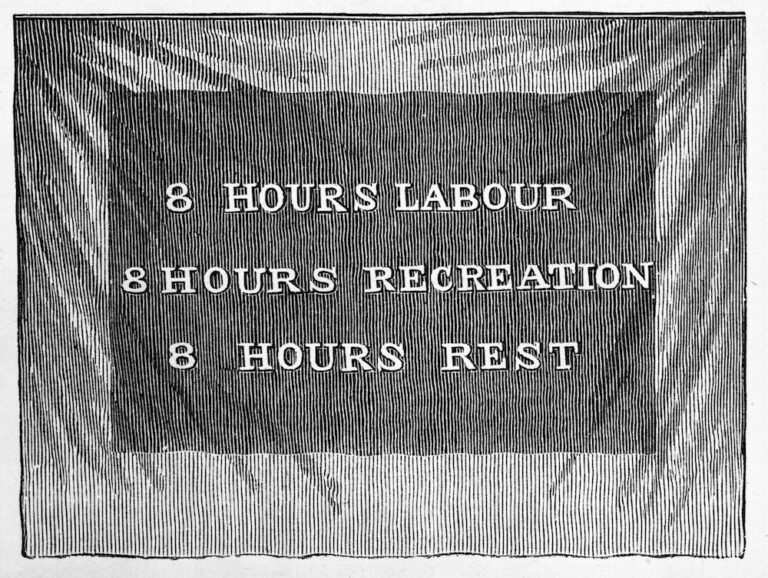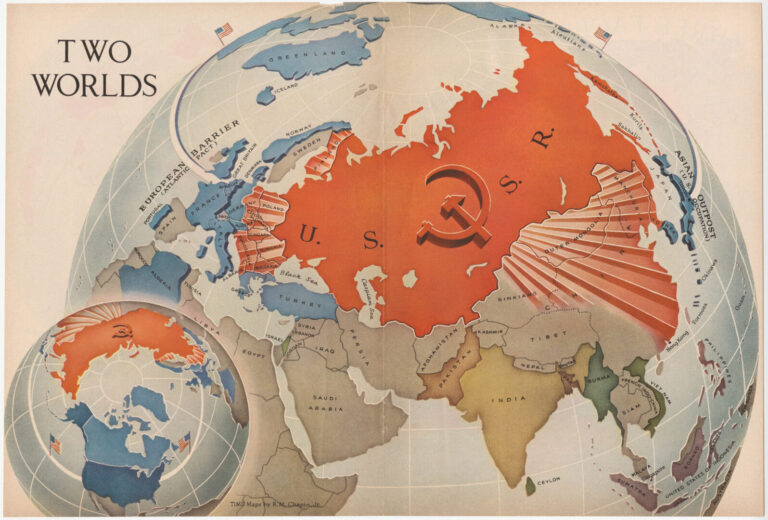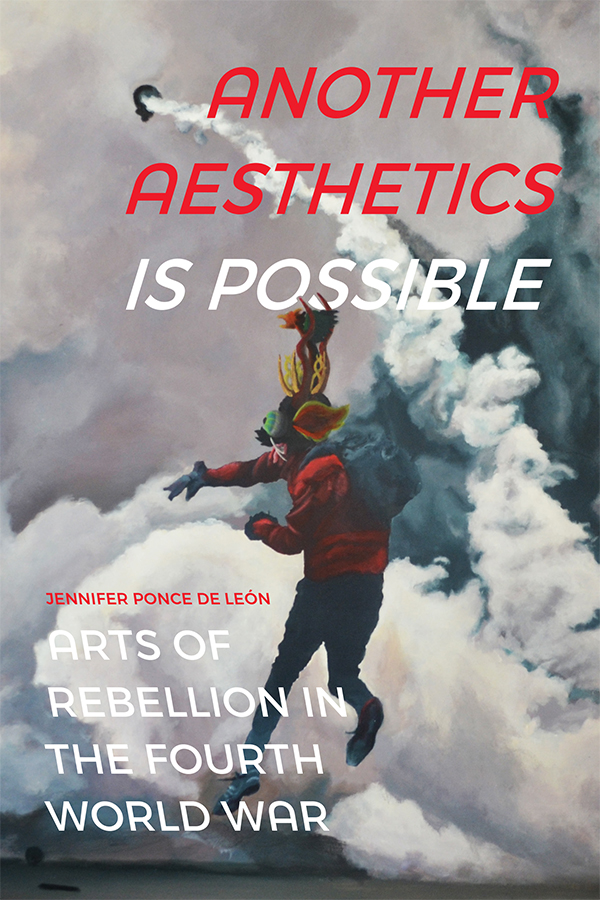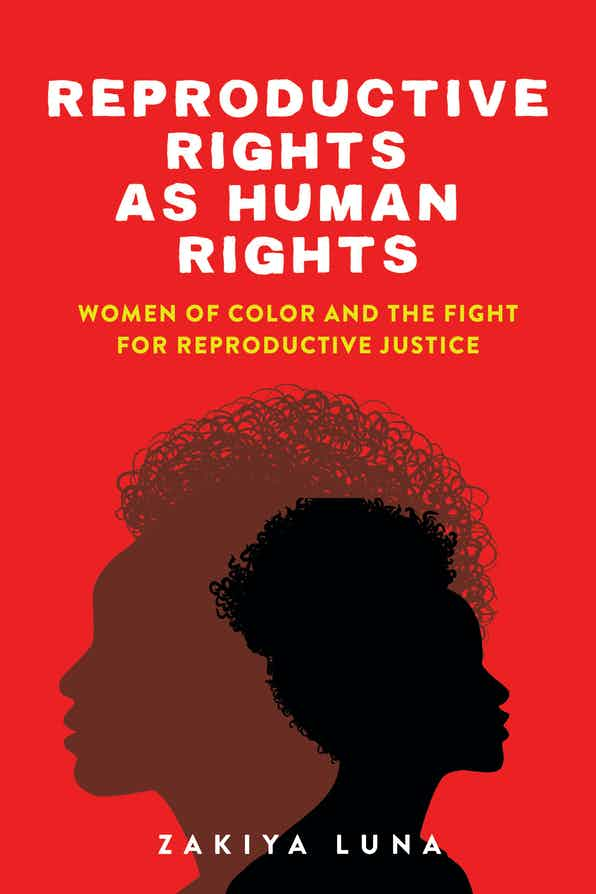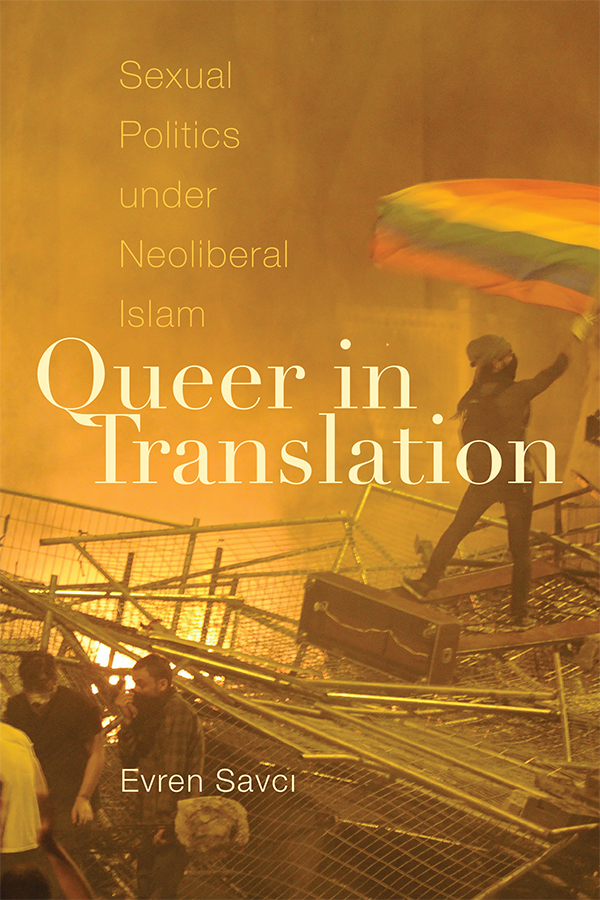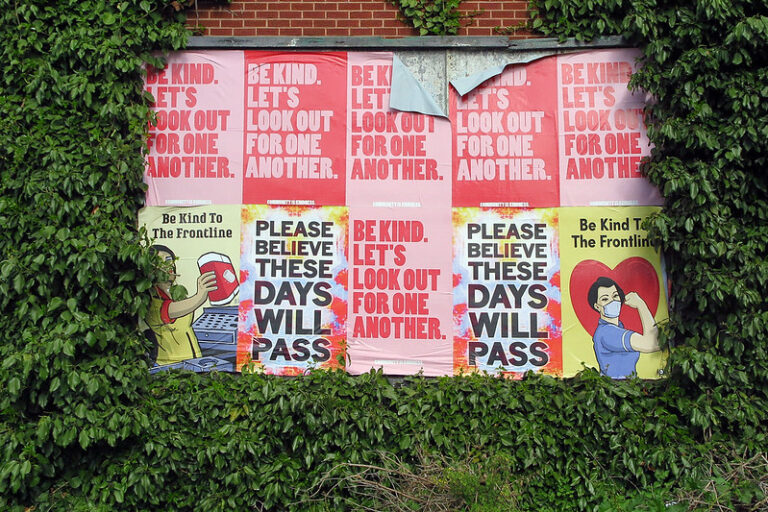Jessica Hurley’s Infrastructures of Apocalypse: American Literature and the Nuclear Complex examines how postwar literature has responded to discourses, both official and unofficial, of nuclear weaponry and nuclear power. Hurley explores how literature from a variety of genres offer a different sense of past, present, and future in response, thus constructing the apocalypse as a transfiguration rather than as a revelation.
Issues
Editors’ Introduction: Materializing Immaterial Labor in Cultural Studies
This introduction frames the six original articles in this issue and the forum on “Corona A(e)ffects: Radical Affectivities of Dissent and Hope” around the concept of immaterial labor. Two full years into a pandemic that has uprooted place-based work for many, and forced even more indoors, away from public spaces, and onto screens, we reflect on the very material effects of present-day immaterial and emotional labor.
First-Person Shooters, Tunnel Warfare, and the Racial Infrastructures of the US–Mexico Border
Digital networked media actively participate in the nation-state’s and tech entrepreneurs’ efforts to imagine and manage the borderlands. These media facilitate virtual forms of thinking about the border both by offering popular reference points for the new technology being developed (e.g. Google Maps, Pokémon Go, Call of Duty) and by providing the actual tools through which these ideas can become actionable. This article analyzes one such reference point within the first-person shooter (FPS) console game Call of Juarez: The Cartel (Ubisoft, 2011). Like other border-themed video games, The Cartel borrows on colonial tropes and ideologies by creating playable narratives that invoke the untamable frontier and position racialized subjects as Other. Through its virtual modes of representation and interaction, the game encodes the racialization processes that continue to shape popular imaginings of the border. While its digital aesthetics animate a dynamic space of possibility, the logic of the first-person shooter reins in the expansiveness of animated space by restricting it to an interactive experience of tunnel warfare, an ideological orientation to the border underground that channels the players’ purposive motion into a space of direct confrontation and racial violence. Analyzing the narrative and procedural work of this ostensibly reactionary video game demonstrates how border infrastructures structure and shape specific forms of racial and colonial violence.
Back to Basics with Labor-Power: The Problem of Culture and Social Reproduction Theory
Ted Striphas recently called for a return to the “problem of culture” within cultural studies. This is a political as much as a methodological provocation: “culture” became an object of analysis among mid-twentieth century scholars in dialogue with Marxist accounts of ongoing political crises. Taking a cue from this past, this essay rethinks culture in relation to the ongoing crisis in social reproduction via Social Reproduction Theory (SRT). Within some Marxist feminist currents, “social reproduction” refers to the reproduction of labor-power, Marx’s term for the capacity to work sold on the market in exchange for wages. Marxist feminists have theorized such matters at length via their analyses of the practices undergirding the reproduction of labor-power. SRT is not unfamiliar to cultural studies scholars, but those engaged with it tend to explore the representation of socially reproductive practices within culture rather than the ways culture itself contributes to labor-power’s reproduction. This is unsurprising. Historically, the field has discussed labor-power in terms of its circulation rather than its reproduction, detailing culture’s role in reproducing social systems. Drawing upon Michael Denning’s “labor theory of culture,” recent work in SRT, and Marx, I argue that culture functions in a socially reproductive capacity within the logic of capitalism. In doing so, it casts cultural struggle as a form of social reproduction struggle at the intersection of labor-power’s reproduction and that of the society that requires it. This essay constructs a systematic account of culture’s socially reproductive function before using it to consider its historical expression in the current moment.
Arctic Pedagogy: Indigenous People and the MACOS Culture War
This paper is about the place of Indigenous people in an early instance of a culture war in the United States: the conflict in the 1970s over an innovative middle-grades social studies curriculum called “Man: A Course of Study” (MACOS). Funded by the National Science Foundation, MACOS sought to revamp social studies education by addressing big questions about humans as a species and as social animals. It quickly came under fire from conservatives and helped to solidify the concept of “secular humanism” as a social threat. A broad conservative organizing effort, whose effects can still be felt today, eventually ended not only MACOS, but the very viability of school curriculum reform projects on the national level. Though this story is familiar to historians of American education, this paper argues for its centrality to the development of contemporary conservative politics and the early history of the culture wars. It also takes up the largely unaddressed issue of how Indigenous people figured in the MACOS curriculum and in the ensuing controversy. Focusing on the ethnographic film series featuring Netsilik Inuit that was at the heart of the MACOS curriculum, this paper addresses the largely unacknowledged legacy of Indigenous pedagogy, to argue that the culture war that led to the demise of the MACOS project also represented a lost opportunity for Indigenous knowledge and teaching to be incorporated into the formal schooling of American children.
Commodifying Tragedy: Representing Violence against Native American Women in The Cold Dish and Longmire
By focusing on the representation of violence against Native American women in Craig Johnson’s The Cold Dish and the television show Longmire, this article demonstrates how these cultural productions perpetuate settler-colonial power relations. Although Longmire is one of the more progressive shows thanks to its development of Native American characters and storylines, the settler-colonial status quo is affirmed in four main ways. Not only do the novel and TV show redeploy the racist stock characters of the Magical Indian and the White Savior, but the TV show especially also reiterates a version of the stereotypical Vanishing American narrative inherited from the Western genre. Furthermore, both cultural productions heavily pathologize the Cheyenne community, depriving them of agency. Finally, the novel and show both transform pain, suffering, and grief into transferable commodities. This allows them to disinvest the pain and tragedy suffered by the Native American characters in order to reinvest this tragic potential in white characters, which serves to reinforce the white characters’ heroism. The commodification of tragic potential and emphasis on its sentimentalization help obscure the settler-colonial origins and systemic perpetuation of violence against Native American women. In sum, this analysis shows that the deeply ingrained and normalized settler-colonial ideology inherent to representational strategies limit the progressive potential of even the most benevolent and well-meaning white cultural productions.
Coronavirus Pedagogy in the Zoomscape: Pinhole Intimacy Culture Meets Conscientization
The COVID-19 pandemic emptied universities, colleges, and schools across the United States in March 2020, forcing instructors into an unavoidable culture in which a networked commercial technology mediated teaching and learning. In the tradition of critical pedagogy, this article argues that students and instructors alike engaged through the artificial lenses and screens of Zoom. The “pinhole intimacy” of the Zoomscape is assessed using conscientization, the concept offered by the Brazilian educator Paulo Freire, to describe most pedagogy as an oppressive apparatus that can be overcome with direct engagement between students and instructors. In such an opticentric context, the Zoomosphere’s intimacy is used to explore how the emancipation proposed by conscientization might be applied to the culture of pedagogy in a college with a diverse student population, including pedagogical interventions to address the challenges associated with teaching Division I athletes. The context of a large communication department at Boston College provides the empirical foundation for the exploration of coronavirus pedagogy.
2013—East by Eastwest: Cultural Studies’ Route to Eastern Europe
In Eastern Europe, which is the focus of our study, different national scholarly traditions assigned their own place to the study of culture. Although the influence of the kulturologia (“culturology”) schools installed at Russian universities in the 1980s radiated out into Eastern European countries, local academic communities dictated the approach to the study of popular culture. While the Polish field of kulturoznawstwo was propelled by internal forces from the early 1970s onwards, in Czechoslovakia, kulturologie emerged as a new discipline around the fall of the Communist regime. Even so, it failed to take off and by 2012 had vanished completely from the Czech Republic. Central European countries were also affected by the German academic tradition of Kulturwissenschaften with its emphasis on philosophy and aesthetics. Our inquiry highlights the first international conference on cultural studies in the Czech Republic in 2013. It was during this event that a group of new postdocs from Charles University, including ourselves, raised the topic of changes in Eastern European popular culture due to the political transformation in 1989. This group had also arranged for Ann Gray, the final director of the UK Centre for Contemporary Cultural Studies (CCCS) to give a keynote address at the conference, a gesture that clearly linked the CCCS with the group’s own Centre for the Study of Popular Culture (CSPK) established three years earlier. From the outset, CSPK’s organizers aimed to promote the Anglo-American tradition of cultural studies both in the academy and among the general public. At the same time, they sought to retain their independence from academic structures and funding systems that might restrict their political activism.
Review of Another Aesthetics is Possible: Arts of Rebellion in the Fourth World War by Jennifer Ponce de León (Duke University Press)
In Another Aesthetics is Possible, Jennifer Ponce de León looks at recent aesthetic practices in Argentina, Mexico, and the United States that shift the commonsense of history, space, and violence in order to usher in an anticapitalist and anticolonial world. With an expansive archive and a method that combines interviews, journalism, and close formal readings of art–activist practices, Ponce de León demonstrates the importance of aesthetics—and of aesthetic criticism—for making another world possible.
Review of Reproductive Rights as Human Rights: Women of Color and the Fight for Reproductive Justice by Zakiya Luna (New York University Press)
Zakiya Luna’s rich study combines comprehensive discourse analysis of political rhetoric and archival documents with her own ethnographic experiences within the reproductive justice movement. This book is an entry point into this often-marginalized arena, presenting a unique perspective informed by years of participant observation and thorough research which has produced additional projects, attesting to Luna’s expertise in this field of study. As a woman of color, Luna’s work is symbolically significant, and her intersectional lens renders this study broadly applicable to scholars of law, sociology, and gender studies, to policymakers and activists, and, indeed, to all women, who the reproductive justice movement indirectly or directly impacts. In tracing the way that reproductive justice has been framed as a “human right,” Luna addresses the potential for the human rights discourse to deliver on its intrinsic promise to secure freedom and equity for all.
Review of Queer in Translation: Sexual Politics under Neoliberal Islam by Evren Savcı (Duke University Press)
Evren Savcı’s Queer in Translation presents an alternative, both in methodology and analysis, to the Orientalist analytical frameworks typical of Western scholars studying queer politics in Middle Eastern regions. Specifically, Savcı analyzes the rise of Turkey’s Adalet ve Kalınma Partisi (AKP; in English, the Justice and Development Party) to show how the AKP’s increased securitization and oppression of marginalized communities—including, but not limited to, Turkey’s LGBTQ community—is the result of the marriage of Islam and neoliberalism. Savci produces compelling case studies that reveal how Turkey’s weaponization of religion, morality, and capitalism serve to secure the nation against dissenting citizens. From the discourse surrounding the complicated murder of a gay Kurdish man, to unlikely solidarities between religious hijabi women and LGBTQ activists, and the public commons that became Gezi Park, Savci’s critical translation methods reveal how the language to construct and resist securitization in Turkey are far more nuanced than simple attribution to solely Islamist extremism or Western neoliberal influence.
Introduction—Corona A(e)ffects: Radical Affectivities of Dissent and Hope
Right from the emergence of the ongoing COVID-19 pandemic, national governments and international institutions have been relentlessly qualifying it as an “unprecedented” event. We have been told that the virus sees no color or class and that equal sacrifices from each one of us are and continue to be necessary to contain its spread. We have been instructed to look at the virus in scientific, neutral terms as if we had equal chances of being affected by it—as if its routes, that is, did not follow the roots of sedimented histories of oppression, exploitation, dispossession, and structural violence. This forum departs from such narratives to look at how the current COVID-19 pandemic intersects with other pre-existing and enduring pandemics, such as those produced by racism, capitalism, and speciesism. In building on the emerging critiques by Indigenous, feminist, Black, and queer academics, movements, and activists, the contributions it hosts offer multimedia reflections on affects triggered or evoked by the current pandemic, such as rage, fear, despair, restraint, care, and hope. Coming from different parts of the globe and disciplinary approaches, authors convey the “Corona(virus) a(e)ffects” in multisensorial ways, combining written essays, poetry, videos, and photographs. By contextualizing the ongoing COVID-19 pandemic within a historical legacy of structural violence within and across species, this forum moves beyond deceitfully single-focus and temporally flat narrations. In so doing, it provides a space for the expression of radical affectivities of dissent and hope that its outburst has arguably made only more visible and pressing.
Public Space as Infrastructure of Care: The Affective Dynamics of Protomagias Square During the Pandemic
Our contribution puts forward an examination of public spaces as infrastructures of care. The eruption of the COVID-19 pandemic, and the “social distancing” measures imposed by several governments around the world, transformed the very use and conceptualization of urban public spaces. In Athens, Greece, public space, which had already been in different ways at the forefront of multifarious crises since 2010, reemerged, once again, as a critical site of sociopolitical antagonism. Public spaces, such as squares, became central places where people could come together to share knowledge and emotions, collectively alleviate anxieties, and thus (re)negotiate their positionality in the city. Such formations and enactments of social connection, affectivity, and antagonism, reflect the entanglement between everyday life and the political, and also draw attention to the association of public space with practices of care for collective well-being during precarious times. During the ever-increasing securitization and policing of urban spaces in Athens, in which everyday life has come to be ever more permeated by precarity and uncertainty, public spaces have been reenacted as safe and more inclusive environments where people can be and act together. Our contribution also employs a video to render more intelligible the affective interconnectedness of sounds, images, bodies, materialities, and practices in public space. By attending to the affective dynamics of a public square in central Athens, we examine the entanglements between the sociopolitical production of public space and forms of care during the COVID-19 pandemic.
On Witnessing a Riot
In the midst of the COVID-19 pandemic, the murder of George Floyd by Minneapolis police has sparked protests and riots around the world. The policing of the pandemic reveals the racial biases inherent to law enforcement and state-led discipline, laying bare ongoing infrastructural inequalities that render racialized subjects more vulnerable to premature death at the hands of police and public health systems alike. With the video embedded in the article, we guide readers through thirty-nine seconds of rioting in Los Angeles on May 31, 2020, shot on a mobile phone and circulated virally on Twitter. The affected body of the witness indexes both the intensity of the event and the embodied experience of the witness, establishing a relation between the two. The experiential aesthetics of the video exceeds the content and this affectivity circulates with its mediation and movement through networked platforms. Such forms of affective witnessing allow for an attunement to political struggle that occurs through what Hortense Spillers would call the analytic of the flesh. Thinking at the intersection of Black studies, affect theory, and media studies, we argue that the flesh is an affective register crucial to the building of global anti-racist solidarities towards abolition.
Feelings, Fascism, and Futures
The COVID-19 pandemic has exposed some of the most glaring inequalities within nations and across the globe. While the disruption caused by the pandemic has given rise to hopes for a cultural reset to address these structures of inequality—captured compellingly by Arundhati Roy in her vision of the pandemic as a portal—the sediments of inequality have proven hard to erode. In this contribution, I explore this regressive impulse by honing in on the affect of restraint. While restraint is not ordinarily characterized as such, in the pandemic it has been a defining feature of our lives. However, it was not afforded equally. I begin by showing how restraint has become racialized, serving as a political tool to suppress protests, notably Black Lives Matter. I then move to show how globally, too, there has been an imbalance in who is—and what countries are—expected to practice nonintervention, linking both domestic and international uses of restraint to these preexisting structures of inequality. I end by proffering a vision for how, despite all these obstacles, the pandemic has also offered ways to bypass the state and form new social formations.


